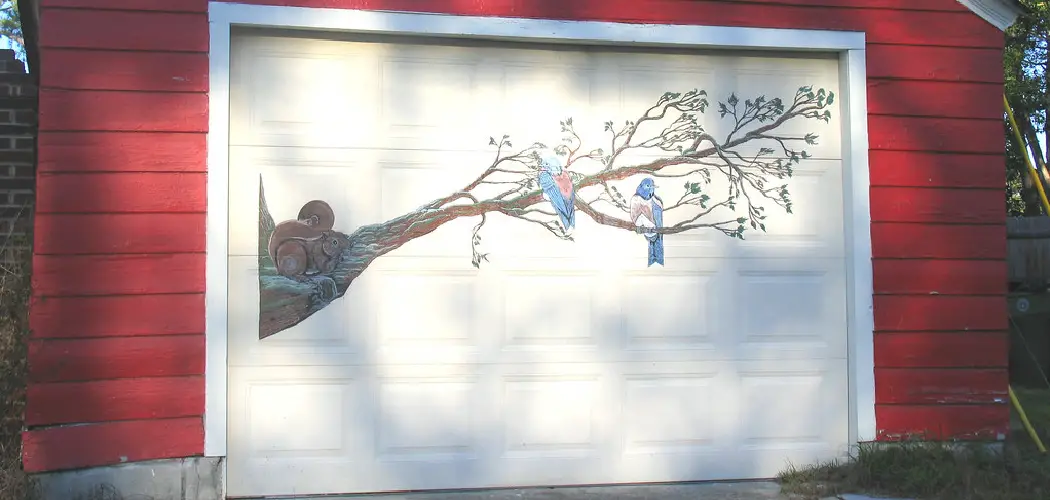Painting your wooden garage door can be a great way to give it a new look and protect it from the elements. Whether you’re replacing an old, worn-out paint job or giving your home’s exterior a facelift, this project is sure to have positive results.
With some basic preparation and painting techniques, you’ll quickly get up-to-speed on how to achieve a professional-looking finish that will last for years to come.
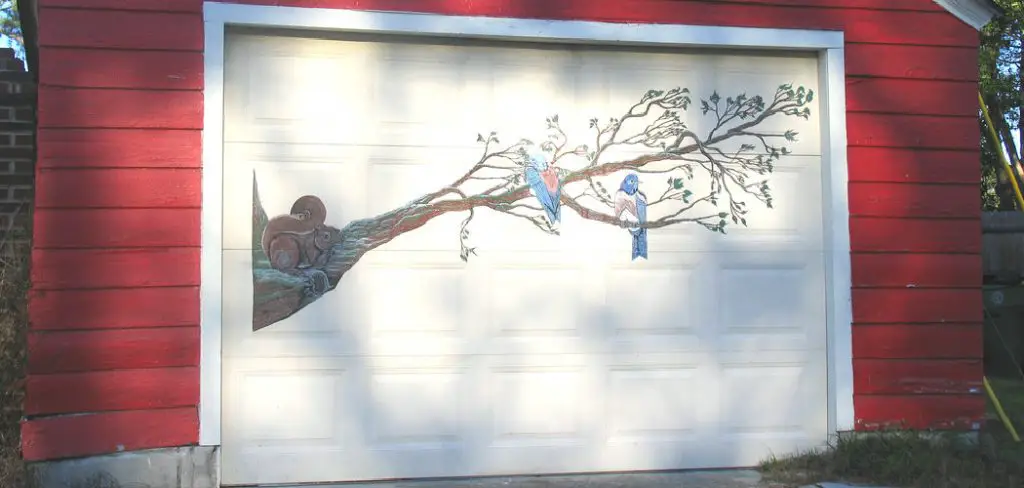
In this blog post, we’ll provide step-by-step instructions on how to paint a wooden garage door so that it stands out from the rest of your home’s exterior. Read on for everything you need to know about selecting the right materials and executing each stage of the painting process!
What Kind of Paint Do You Use on a Wooden Garage Door?
When painting a wooden garage door, it’s important to choose the right type of paint. High-quality exterior paint is recommended for best results and maximum durability. Oil-based paints are generally preferred over latex paints due to their superior adhesion and longer life span, but in some cases, the use of acrylic latex paints is also acceptable.
When painting a wooden garage door, the type of paint chosen should have a low-sheen finish to protect it from cracking, fading, and other damage over time. Additionally, a primer coat should always be applied before applying the final coat of paint.
This will help ensure that the paint sticks to the surface adequately and provides extra protection against moisture, wind, and ultraviolet light. Finally, when selecting a paint color for your wooden garage door, it’s important to keep in mind the overall look of your house or property and choose a hue that complements the existing colors.
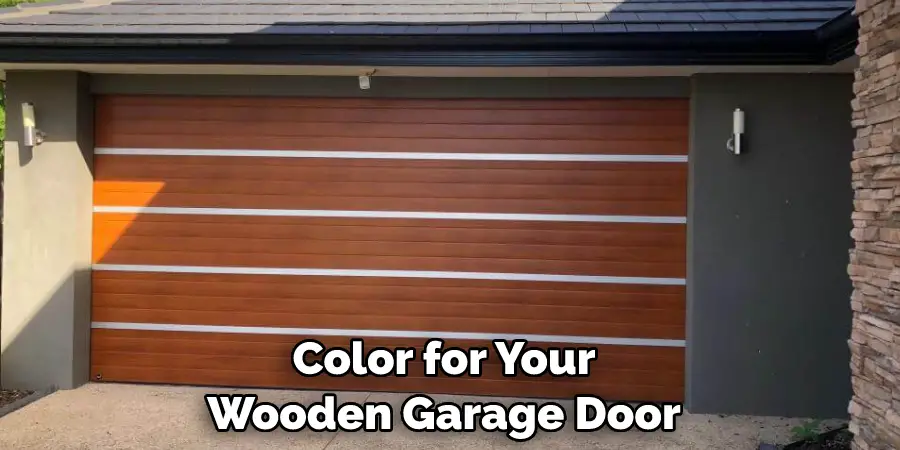
Painting a wooden garage door is not always an easy task, but with careful preparation and selection of the right materials, you can achieve great results that will ensure your door looks its best for many years to come. With the right preparation and paint, you can give your wooden garage door a new look that will last for years!
Do You Need a Primer to Paint a Wooden Door?
Primers are essential for painting wooden garage doors. Using a primer helps to ensure that the paint adheres properly and lasts longer. It also creates an even surface, reducing the appearance of any underlying imperfections. When selecting a primer, make sure it is specially formulated for exterior use and for use on wood. Be sure to read all instructions on the primer’s label before using it.
Before beginning to paint, make sure the surface is clean and entirely free of dirt, dust, or debris. Sand any rough spots with medium-grit sandpaper and then wipe down the door again with a damp cloth. Once this is done, apply the primer in thin coats as per product instructions. Apply the primer with a paintbrush or roller, making sure to cover all surfaces of the door. Allow it to dry for at least six hours before moving on to the next step.
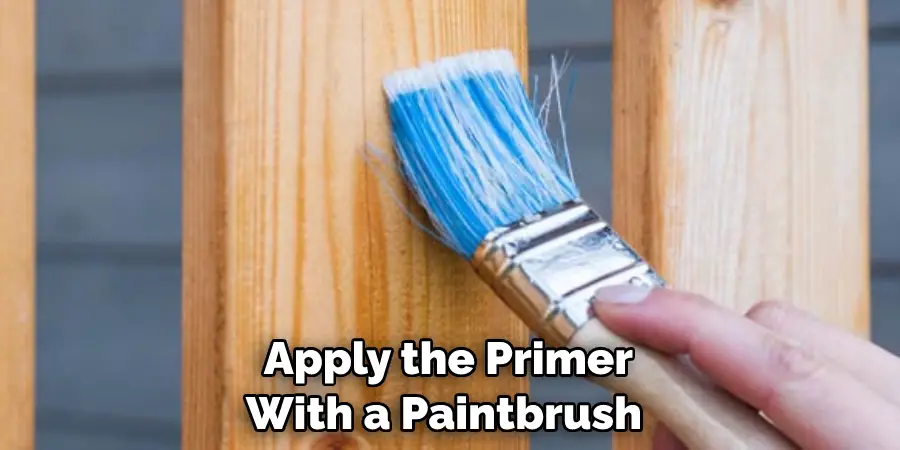
Using a primer is an integral part of prepping your wooden garage door for painting and ensures that the paint adheres well. For best results, be sure to select a primer that is suitable for exterior use and wood surfaces. Follow the instructions on the label of your chosen primer and make sure to prep the surface properly before applying it. With these steps, your wooden garage door will be ready for painting!
10 Steps on How to Paint a Wooden Garage Door
Step 1: Prepare the Work Area
Before starting the painting process, ensure that the work area is clear and free of any obstacles. Remove any items near the garage door, such as vehicles, tools, or garden equipment, to create a safe and spacious work environment.
If you will be using a ladder to reach the top of the garage door, place it securely on an even surface. Although you can paint your garage door while it is still attached to the house, it’s often easier to detach the door from its hinges and place it on a flat surface to paint. Make sure to check that the door is securely fastened when you reattach it.
Step 2: Clean the Surface
Thoroughly clean the surface of the garage door to remove dirt, dust, and any existing paint flakes. Use a mild detergent mixed with water and a soft brush or sponge to scrub the door. Rinse the door with clean water and allow it to dry completely before proceeding. If the has any large cracks, use a putty knife to remove loose paint and debris.
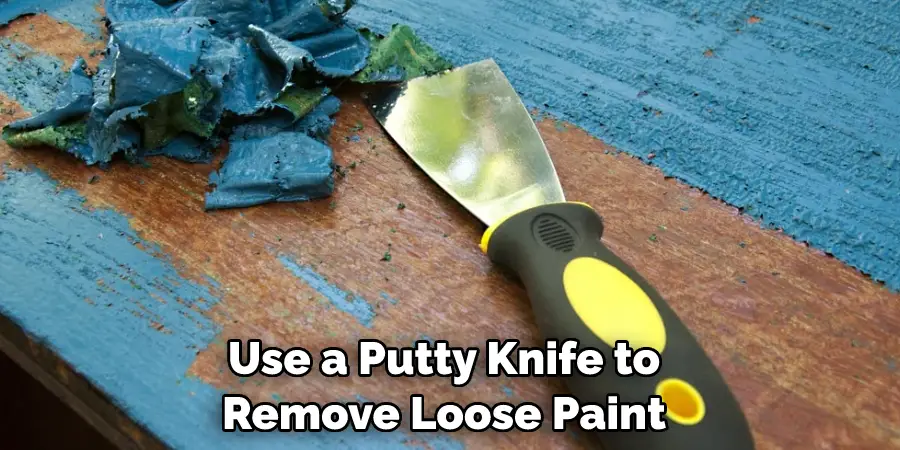
Fill in any deep cracks with wood filler and allow it to dry completely before continuing. While the door is drying, you can prepare the painting area by gathering your supplies and setting up a drop cloth or other protective covering.
However, do begin painting until the door is completely dry. Try to avoid painting in direct sunlight, as the intense heat of the sun can cause the paint to dry too quickly, resulting in an uneven finish. Once the door is dry, you’re ready to begin the painting process.
Step 3: Sand the Door
To create a smooth and even surface for the paint, lightly sand the entire garage door. Use medium-grit sandpaper and sand in the direction of the wood grain. Sanding helps remove any rough spots and old paint remnants and promotes better paint adhesion. Pay extra attention to any spots that may have been damaged over time.
When finished, wipe the door with a damp cloth to remove any dust or debris. While sanding, be sure to wear a dust mask and protective eyewear. If you are working on a metal garage door, skip this step. Once the door is prepped, it’s ready to be painted.
Step 4: Repair Any Damaged Areas
Inspect the garage door for any cracks, dents, or other damage. Use a suitable wood filler to repair these areas. Apply the filler with a putty knife, following the manufacturer’s instructions. Once the filler is dry, sand it lightly to ensure a flush and smooth surface.
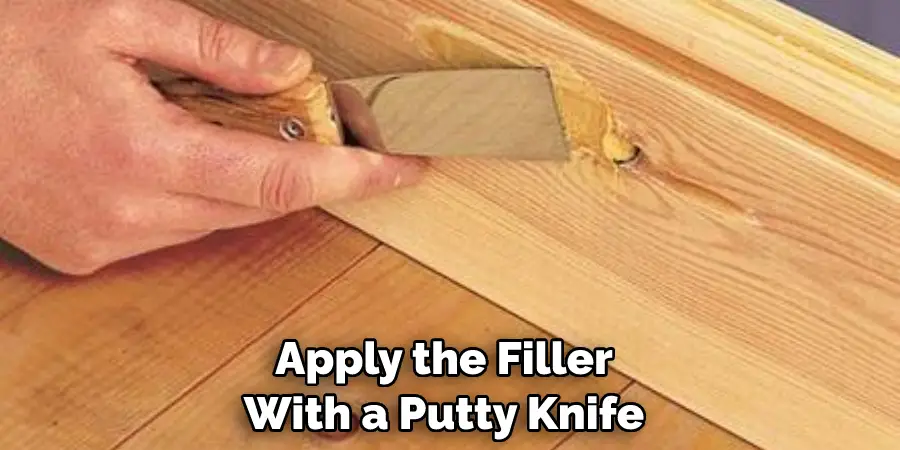
If there are any exposed screws, replace them and make sure they are tightened securely. Although this step is not essential for painting, it will help to ensure a good surface base and will help the garage door look better after.
Step 5: Prime the Door
Applying a coat of primer is essential for better paint adhesion and to ensure an even finish. Select a high-quality exterior primer suitable for wood surfaces. Use a brush or roller to apply the primer, following the manufacturer’s instructions. Allow the primer to dry completely before moving on to the next step.
Now the door is ready to be painted. If need be, apply a second coat of primer for complete coverage. Let it dry thoroughly before continuing to the next step. Though it may take a bit longer, priming the door is an essential part of ensuring a lasting finish.
Step 6: Choose the Paint
Select a high-quality exterior paint specifically formulated for wood surfaces. Consider factors such as weather resistance, durability, and the desired color. Opt for a paint that provides UV protection to prevent fading and damage from sunlight. When purchasing paint, get enough for two coats, as this will yield a better result.
To ensure a uniform finish, make sure to buy all the paint from the same batch. Although there is a wide range of colors to choose from, stick to neutral hues that will match your home. Make sure to buy the appropriate painting supplies, such as brushes, trays, and a ladder.
Step 7: Start Painting
Begin by painting the recessed or detailed areas of the garage door using a brush. Take your time to ensure even coverage and reach all the nooks and crannies. Once the detailed areas are painted, use a roller or paint sprayer to cover the larger flat sections of the door. Apply the paint evenly, working in small sections.
For best results, apply two coats of paint, allowing the first coat to dry before applying the second. If you are using a sprayer or roller, you may need to apply an additional coat. Allow the final coat of paint to dry completely before opening and closing the door.
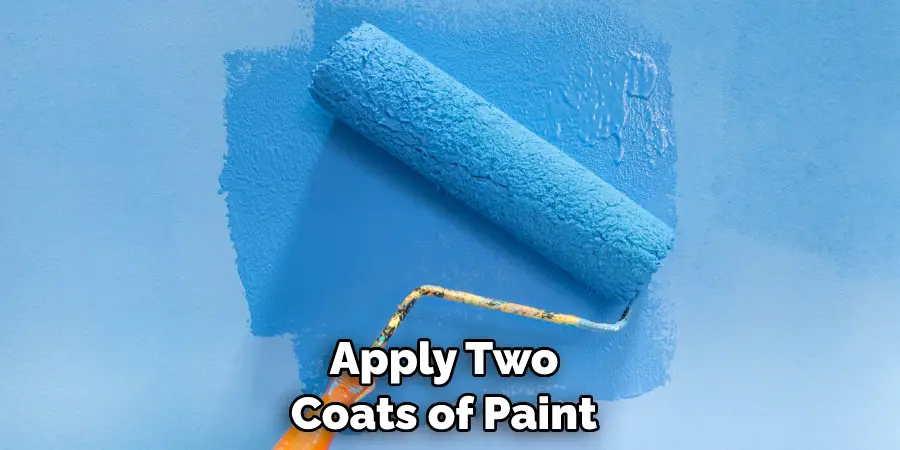
Step 8: Allow Sufficient Drying Time
Follow the paint manufacturer’s instructions regarding drying times between coats. Ensure that each coat is fully dry before applying the next one. This step is crucial to prevent smudging or uneven color distribution. Consider applying two or more coats for a solid and long-lasting finish.
Make sure to use a fan or other appropriate method in order to speed up the drying process. Once all coats are applied, and you’ve given them enough time to dry, the paint job is finally complete. Additionally, you can use a clear sealer to protect the paint. This will also help enhance its color and make it more resistant to weather damage.
Step 9: Finishing Touches
Once the final coat of paint has dried, inspect the door for any imperfections or areas that require touch-ups. Use a small brush to correct any errors or uneven spots. Pay attention to corners, edges, and any intricate details.
Finally, add a sealer to protect the paint and keep it looking fresh for longer. For best results, use a urethane-based sealer. Apply with a foam brush in even strokes and allow to dry completely before closing the door. Additionally, you may want to add a clear coat of automotive wax or car polish for added protection.
Step 10: Clean-Up and Maintenance
Properly clean your painting tools, such as brushes, rollers, and trays, as per the manufacturer’s instructions. Dispose of any used paint cans or materials responsibly. Regularly clean your painted garage door with mild detergent and water to maintain its appearance and prolong its lifespan. Be sure to rinse it thoroughly with clean water.
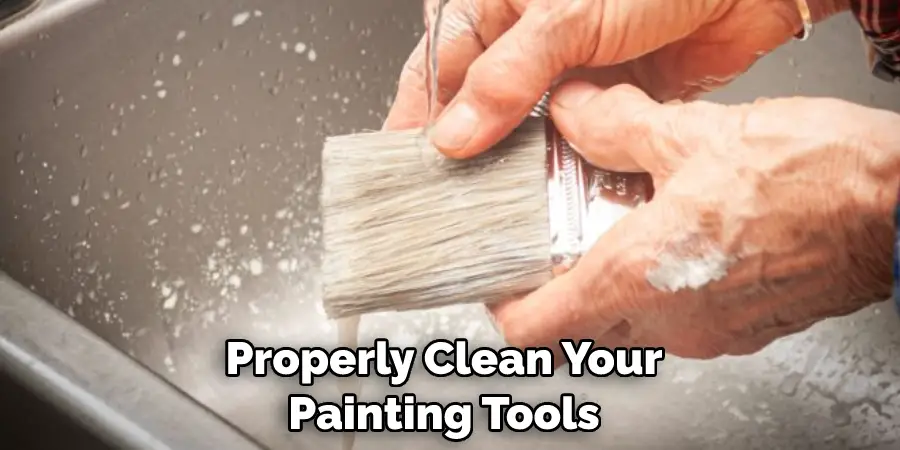
Lastly, inspect your garage door regularly for signs of wear and tear and repair any damaged areas as soon as possible to prevent further damage. Following these steps will ensure that your painted garage door will remain beautiful and last for years to come.
Some Common Mistakes When Painting a Wooden Garage Door
1. Not Prepping the Surface
A glassy, smooth garage door requires more preparation than a rough one. It is important to sand the entire door surface, using a grit sandpaper that is appropriate for the type of paint being used. Use a vacuum cleaner to remove dust and debris from the door.
2. Skipping Primer
Primer should be applied before any paint coat, in order to ensure that the topcoat adheres properly and lasts longer. Without primer, the paint might not adhere to the garage door surface or it could peel off quickly due to exposure to outdoor elements such as sun and rain.
3. Applying too Much or Too Little Paint
When painting a wooden garage door, it is important not to overload your brush with too much paint, as this will cause drips and runs. Additionally, it is important to make sure that the paint is applied evenly and thinly so that an even finish is achieved.
4. Not Giving Enough Time for the Paint to Dry
For a wooden garage door to achieve the best possible finish, it needs time to dry properly between each coat of paint. Allowing more drying time will result in fewer brush strokes and less visible lap lines.
Conclusion
Painting your wooden garage door is a great way to spruce up the exterior of your home and give it much-needed curb appeal. Not only that but taking care of your garage door also helps protect it from the elements and prolong its life.
As long as you use the right tools and techniques – such as making sure to properly prepare the door’s surface, using quality paint products, and applying an even coat painting a wooden garage door can be a rewarding job that adds not just visual appeal but also lasting value to your home.
Now that you have all this new knowledge get out there and paint that wooden garage door! Thanks for reading, and we hope this has given you some inspiration on how to paint a wooden garage door!

